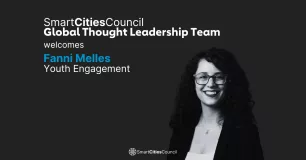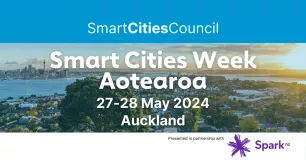
Flashy apps and websites get a lot of attention for reaching people, but by themselves, they are not citizen engagement. They are tools for developing it. And citizen engagement should be at the very heart of your smart cities initiatives.
Everything from setting the right goals to developing plans and financing strategies to reach them requires citizens to be engaged. This is the first in a three-part series designed to help you build engagement with the goal of making your initiatives more successful.
Today, we talk about crafting your own recipe for building engagement. Check back over the next two weeks as we dive deeper into engagement hits and misses. — Jesse Berst
Citizen engagement is more than just a user friendly municipal website. A threshold measure, citizens are more satisfied with transactions that can be accomplished over a website rather than through a trip to city hall.
But that is just the starting point. Municipal managers are discovering real value in “citizen enriched data.” Well-planned and supported citizen engagement can yield long range improvements in city growth, health and revenue. (Yes, … revenue!) Achieving all these benefits won’t be easy. Each city must determine its own path, considering its unique assets and liabilities.
This article on citizen engagement in the digital age is the first of three on assessing the benefits of an enhanced citizen engagement strategy for your city, crafting a roadmap that evades pitfalls and accomplishes substantive, valuable results.
Determine Your City’s Character
Are your citizens yearning to tell you what they care about? Or do they feel that is “above their pay grade”? Move forward on a citizen engagement strategy with care. The contrast between the US experience and the EU experience with initiating citizen engagement policies illustrates the importance of understanding a city’s background.
While US cities may currently be ahead of the EU and other countries in experimenting with varieties of citizen engagement, that head start may not last. The US has the advantage of having one nation with a shared tradition of civic activism; remember the Boston Tea Party, and a relatively narrow range of local government frameworks. Whether Mayor or Manager, City Council or Town Meeting; US cities can produce new citizen engagement experiments on a fairly uniform canvas with about 250 years of practice.
The EU, in contrast, has 28 countries representing a wide divergence in governance history, interpretations of a citizen’s role in government and of municipal government structures. The challenges for EU countries developing citizen engagement oriented tools and policies are much greater than in the US. But, done well, the rewards for governance and civil discourse can be substantial.
Elected vs Appointed Centers of Power?
Directly elected mayors, especially Mayors in large cities, may have a significant political mandate, which appears, at least to the Mayors, to provide greater legitimacy to their decisions. Contrasting ideas emerging from citizens may not be well tolerated by the Mayor. Ignoring or disrespecting the citizen voice can cause new conflict.
Capacity to Hear and Respond?
An enthusiastic city government can easily raise expectations among citizens, expectations that need responses. Responses need structure, timing and accuracy. Responses may require the city to be held accountable legally and politically for messages communicated by junior staff. The complexity of messaging and the time requirements of follow up can require more time, more manpower, more staff expertise and more political risk than the city government can afford to commit.
Assess your city’s character on issues like these:
1. Pressure to shift fiscal and political power from state to lower tiers of government, in order to strengthen local democracy, is increasing.
2. Cities, in turn, are under pressure to provide citizens with increased opportunities for participation in local governance.
3. Seductive new digital tools are emerging daily, tempting city officials to invite citizens to engage with the municipal government process in new, immediate and intimate ways.
4. Cities may lack the staff expertise to match the expectations of citizens trained to expect the digital sophistication of Facebook, Amazon or Twitter.
5. These trends can result in conflicting policies that reflect divergent local, regional and state aspirations.
Caution. Success Has a Price.
The multitude of citizen engagement experiments a city starts causes an increase in “engagement fatigue” and irrationally high expectations for change among citizens. Among municipal governments, the experiments can be staff intensive, time consuming and provide little return for the municipal investment.
On the other hand, in some cases citizen participation projects can educate the citizenry on complex issues; increase transparency in and support for government; level the disproportionate influence of different social, economic, racial, religious and geographical populations and draw on citizen knowledge and expertise to improve the quality of life in the municipality.
Framework for Assessing Citizen Participation Models
By now, cities have launched enough experiments in citizen participation to enable us to create a hypothetical analytical framework to assess the types of citizen participation models appropriate for your city’s character. Such a framework won’t automatically prescribe the right approach for every community. But, by considering the variety of components in a citizen engagement strategy, city officials may more easily determine the best approach for the city’s characteristics and history.
Value Perspectives of Citizen Participation
Government Perspective:
1. Provides “citizen enriched” data
2. Can result in increased perception of well-being within the community
3. Staff reductions possible if “counter services”, like notifications and financial transactions are automated
4. Opportunity to educate, inform and organize community
5. Different neighborhood voices broaden city officials’ perspectives
Citizen Perspective:
1. Improved quality of life is net return for time invested in participation
2. Opportunity to exert influence on a special interest
3. Satisfaction of active participation in democratic process
4. Opportunity to meet fellow citizens and gain new information
5. Opportunity to potentially organize fellow citizens
Modes of Citizen Participation
1. Ballot box
2. Meetings, events
3. Print material, newspapers, flyers, surveys
4. Citizen advisory groups, strategic planning groups
5. Websites providing information
6. Mobile applications
7. CRM municipal systems to help city hall manage all citizen interaction across multiple communication channels while keeping stakeholders informed 24/7
8. Social media
9. Streaming video
10. Crowdsourcing
11. Data analytics from IoT (Internet of Things) remote sensors and departmental operations data like police calls, traffic reports, etc.
Citizen Engagement Dimensions
1. Active (direct citizen participation with governing officials) vs. Passive (data collected and aggregated to show citizen preferences)
2. Single issue (fix potholes, design new park) vs. multi issue (neighborhood meeting, set aside for city budget recommendations by citizens)
3. Informational (information on budgeted programs or pothole locations) vs. decisive (citizen poll to select specific budget recommendations)
Citizen Representation Categories
1. Visitor, anonymous contributor of information
2. Citizen, resident, individual representative
3. Business representative
4. Community services, non-profit, N.G.O. representative
5. Neighborhood or geographically specific area representative
6. Elected or appointed official
7. Utility or other civic entity
8. State or regional government representative
Think you are ready to start?
Think again. Do not go forward without engaging all city departments and the city’s chief legal officer in the development of a clear policy handbook on citizen engagement and social media. Here are six tips for preparation:
1. Policy must come from and be supported by the top level of municipal government.
2. Be clear about the mission, goals, audience and stakeholder roles anticipated in the use of social media to enhance citizen engagement.
3. Clarify legal rules concerning citizen engagement, social media and public records requirements.
4. Draw on best practices from other government agencies to write social media policies that are clear and easily understood by the public.
5. Develop a “style book” with rules on who, when and how a post is made by the city; preferred hashtags, comment policy, types of posts, restrictions on posts
6. Expect to revise, refine, rewrite as needed.
Smart Cities Readiness Guide …
Check out the Smart People chapter of the Council’s Smart Cities Readiness Guide for innovative approaches to encourage broad participation in city decisions. Smart cities encourage all city stakeholders to develop a vision for the city they want to live in.



